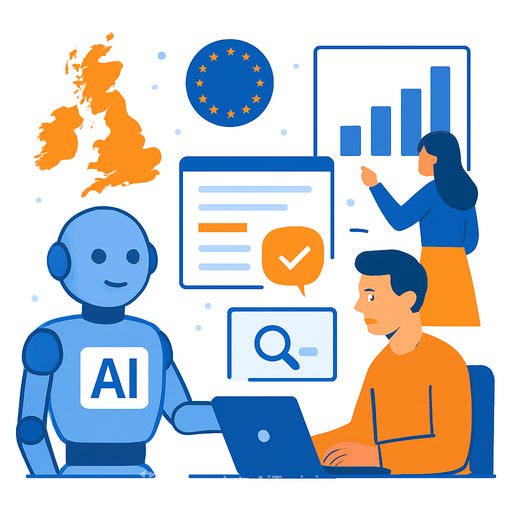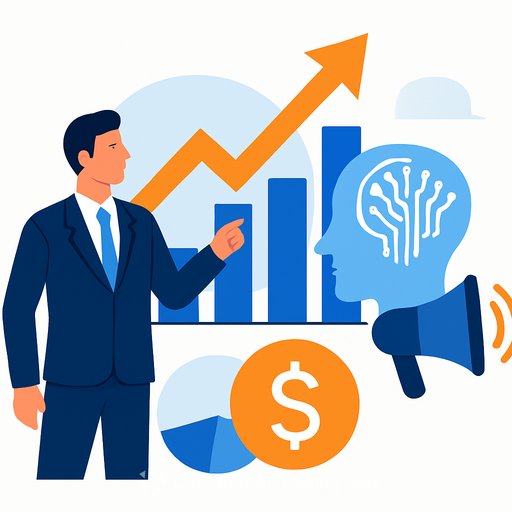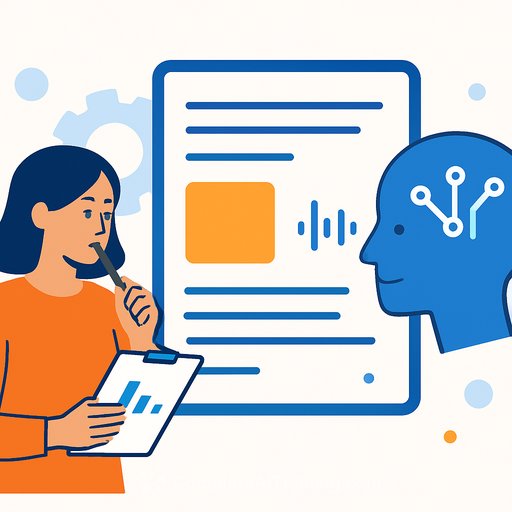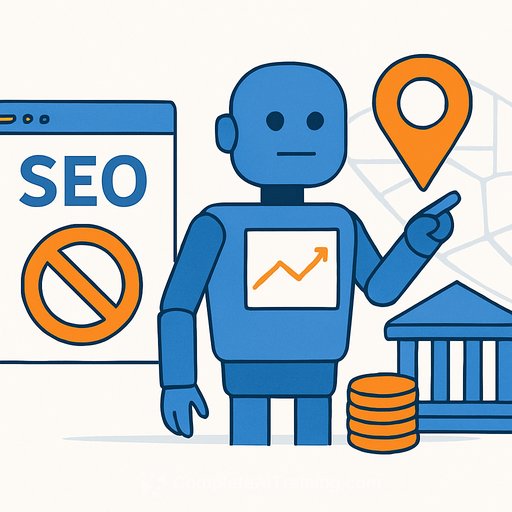Generative AI: A U.K. and EU marketer's guide to what's working now
AI has moved from side project to standard practice. Two-thirds of marketers use AI tools daily, and in the U.K., that figure jumps to 84% per the latest industry research. The promise is simple: time back and better output.
Marketers report meaningful time savings across key tasks:
- Data analysis and reporting: 86% save at least an hour per week
- Media content creation: 76% save time
- Direct brand messaging/conversational marketing: 70% save time
- Market research: 67% save time
Adoption is accelerating, too. U.K. advertisers using generative AI in at least one workflow jumped from 9% to 41% between April 2024 and July 2025, with 62% prioritizing time and cost savings. And 61% of senior CPG and retail marketers say AI investments are already tied to revenue growth.
01. How AI is reshaping marketing workflows
Look at Unilever. The company built a Beauty AI Studio with The Brandtech Group to speed creative across paid social, programmatic display and e-commerce in 18 markets. "It's a different way of working. We used to send briefs off and get content back. Now it's this agile, iterative approach," said Selina Sykes, global vp and head of marketing transformation, beauty and wellbeing.
The output shift is real. Unilever is creating roughly 400 creative assets per product. Previously, it was about 20 assets per campaign. The goal: double-digit budget savings while improving creative-market fit at scale.
Under the hood, the system uses Pencil Pro (built by Brandtech Group), multiple LLMs and API connections to platforms like Meta and TikTok for effectiveness feedback. Teams generate on-brand images and video from 3D product renders ("digital twinning"), guided by each brand's "BrandDNAi" to enforce guidelines and local regulations. Industry benchmarks suggest AI-enabled advertisers and agencies are cutting creative production spend by about a quarter.
What this means for agencies
Brands are consolidating and expecting AI-forward delivery. Unilever trimmed a sprawling roster and leaned into a holding company model for beauty and wellness. Many marketers are pursuing a hybrid approach: let agencies lead with AI capability now, with a possible handoff to in-house units later.
That handoff, if it happens, will raise practical questions: how agencies are paid, how IP is transferred, and who owns the training data and models that encode brand nuance. Expect contracts, scopes and incentives to change alongside the work.
Creatives are getting comfortable with fully AI-made ads
Client resistance is fading. "We have seen a shift in client openness to fully AI-developed campaigns," said Christian Pierre, global chief intelligence officer at Gut. "Generative AI started as an experiment you had to sell in. Today, the client that is not using it feels like they are missing out."
On set, teams are also using AI to solve problems in real time. Craig Miller, chief creative officer at Schafer Condon Carter, described adding a bearded dragon to a spot while filming after the director pitched the idea. The team used Midjourney to design the character on the spot and later composited it into the footage. "We didn't know that could really be possible - and be convincing."
Appetite varies by category. Food and QSR teams are still cautious. But as production savings become more obvious and legal concerns ease, more fully AI-produced work will ship. As Pierre put it: "Everyone is using it, some more openly than others. The red line keeps moving."
02. Zero-click search is changing discovery
There was a time when page-one SEO meant predictable traffic. That foundation is cracking. If Google behaves more like a destination than a referral, winning organic visibility gets harder for everyone - publishers and brands alike.
Google still accounts for the vast majority of U.S. search activity, so shifts here move the market. That means fewer clicks to your site, more answers on the results page, and more pressure to pay for visibility. For content-led marketers, the playbook needs a refresh.
Who's most exposed? Brands that scaled on search without deep audience relationships or strong first-party data. Who's safer? Teams with direct-to-consumer models and clean, consented data.
Adaptation paths are clear but come with trade-offs: more paid media, more creator work, and heavier bets on channels where discovery still works (YouTube, TikTok). Many see this as the new normal unless user behavior, regulation, or competition forces a reset.
As one innovation lead put it, zero-click is "totally collapsing the user journey." DTC marketers, who can spend up to 20% of budgets on paid search, are treating this as a yellow alert - serious, but manageable with swift iteration.
Working playbook so far
- EGC Group: Bid less on long-tail queries that trigger AI Overviews; shift to narrower keywords. Refresh paid-search copy to match new contexts. For organic, grow earned media - LLMs give weight to reputable news and media sources, so press matters more.
- Kendra Scott: Added 8,000 pages to improve organic coverage as discovery shifts. "That changes how we think about visibility, conversion, even the role of our website," said Kamanasish Kundu, svp of digital and e-commerce.
- Amex GBT: Held paid-search budgets steady while reworking SEO with its agency. The goal: reduce channel reliance without sacrificing performance.
03. What's next (and how to be ready)
New tools, new rules, and new platforms will keep coming. The marketers who stay ahead have a tight feedback loop: ship faster, measure earlier, and reallocate budget without drama. Or as Nic Brandengerger, CMO at Mammut, put it: the job is to roll with the punches.
- Aim AI where it compounds. Creative versioning, market-level localization, and performance feedback loops. Track savings against a double-digit target and reinvest the delta.
- Set guardrails early. Encode tone, claims, legal, and regulatory constraints (per market) in prompts and templates. Treat "BrandDNA" systems as a requirement, not a nice-to-have.
- Use a hybrid org model. Let agencies prototype and pressure-test. Plan the handoff path (data, models, rights, and remuneration) before you scale.
- Rethink measurement. Wire effectiveness APIs (e.g., platform feedback) into your creative pipeline. Test AI-made vs. incumbent assets and kill underperformers quickly.
- Prepare for zero-click. Split SEO into "AI Overview-aware" and "narrow intent" plays. Upgrade paid-search copy. Increase earned media output. Build presence where discovery still has reach (YouTube, TikTok, creators).
- Upskill your team. Prompt fluency, AI art direction, compliance know-how for U.K./EU, and a working knowledge of attribution in messier funnels.
Further reading: HubSpot's latest data-packed summary of AI in marketing is a helpful benchmark. For search share trends, StatCounter's reports offer a clean view of shifts over time.
2025 State of AI in Marketing Report
Search engine market share (StatCounter)
Want your team fluent, fast?
If you're building AI capability inside marketing, a focused certification can speed up adoption and set shared standards. Start here:
AI Certification for Marketing Specialists
Your membership also unlocks:






